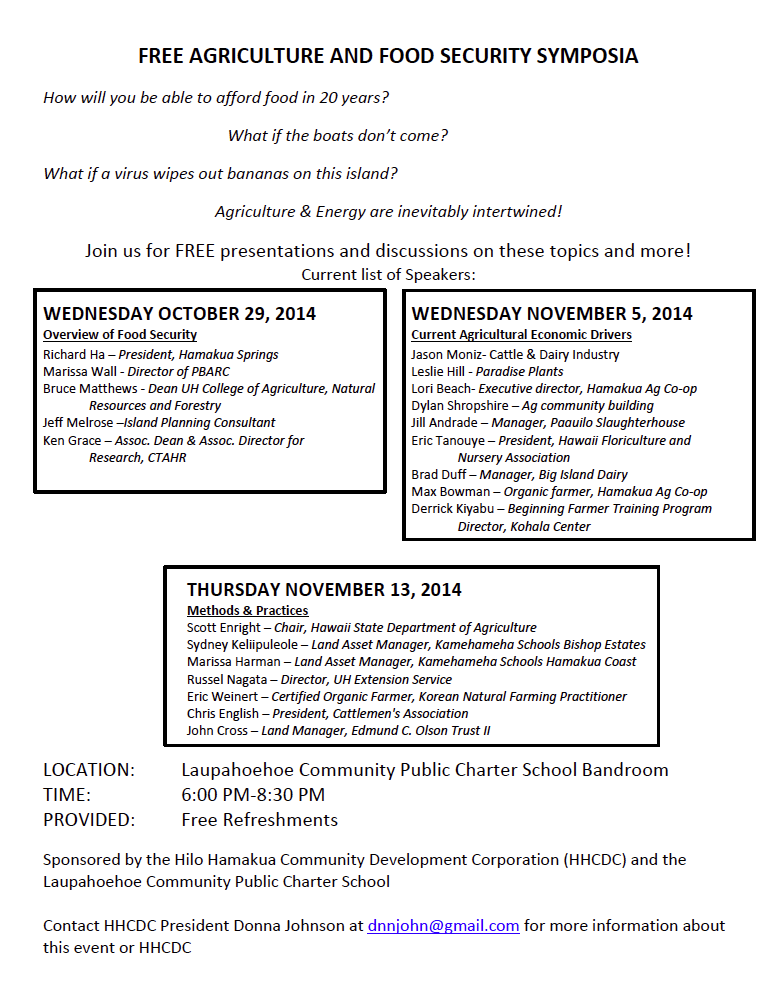Richard Ha writes:
Save the dates:
- Wednesday, October 29
- Wednesday, November 5
- Thursday, November 13
- 6-8 p.m.
- Laupahoehoe Community Public Charter School Bandroom
On these dates, the Hilo Hamakua Community Development Corporation will hold a series of community meetings to discuss agriculture on the Hamakua Coast. All are welcome (and refreshments are free).
We will take a 40,000 foot view of ag and its outside influences, and then look at the resources available to help us, such as the Daniel K. Inouye-Pacific Basin Ag Research Center (PBARC), the College of Tropical Ag and Human Resources (CTAHR), and the College of Ag, Forestry and Natural Resources Management (CAFNRM) at UH Hilo.
There are many scientists researching various subjects. What do we want them to work on?
Farmers will be at the meeting to share their knowledge and experience.
Are you looking for land to farm? Kamehameha Schools/Bishop Estate with be there, and the Hamakua Ag Co-op has vacant land.
John Cross, former land manager for C. Brewer/Hilo Coast Processing, will attend. Did you know why all the sugar cane equipment had tracks, rather than rubber tires? Did you know that the plantations frequently planted banyan trees as significant landmarks?
Jeff Melrose will be at the meetings. He recently did a study that's a snapshot of agriculture on the Big Island. He will talk about on what is grown on the Hamakua coast and why.
Come and talk story with the presenters, learn where you can get additional information, and speak up on what you would like to know more about in the future.

